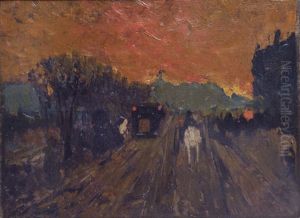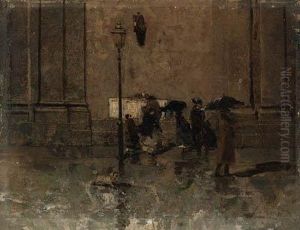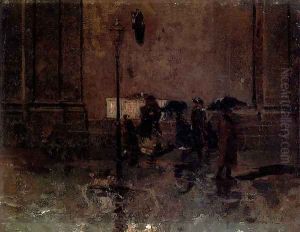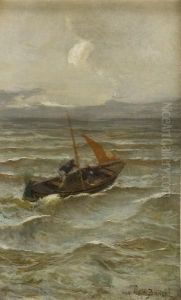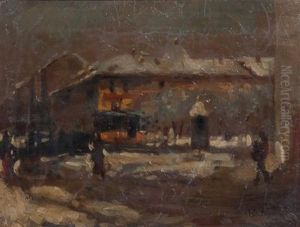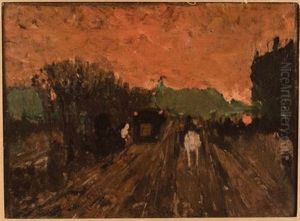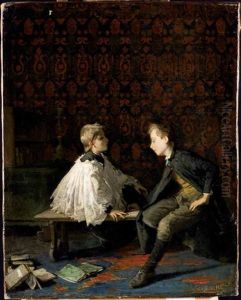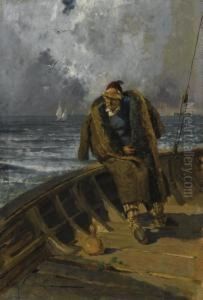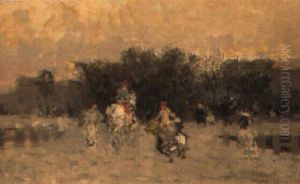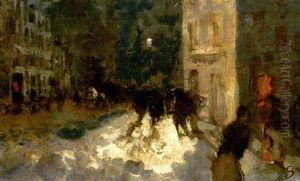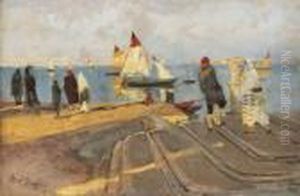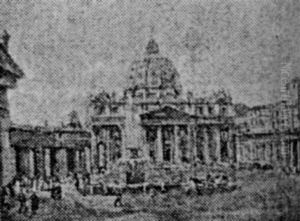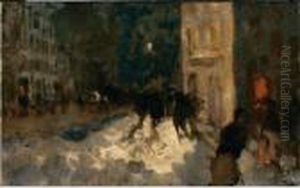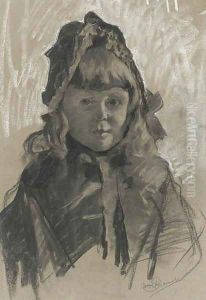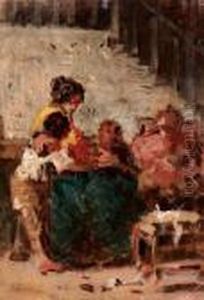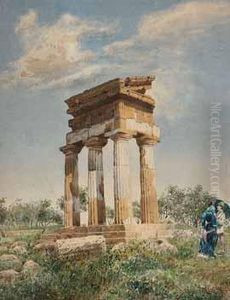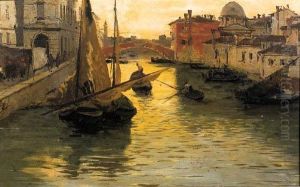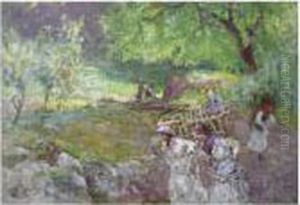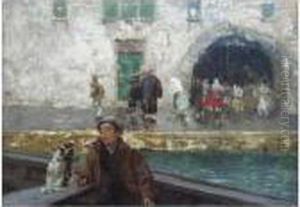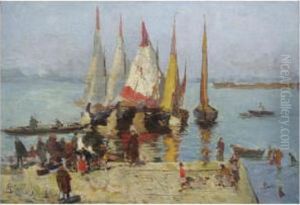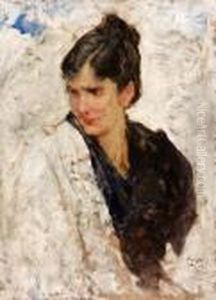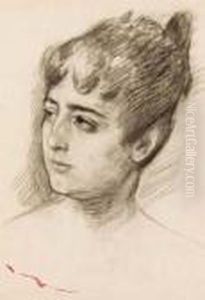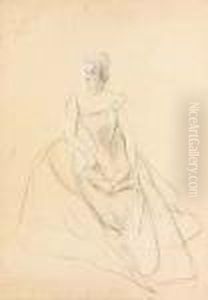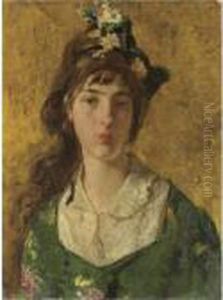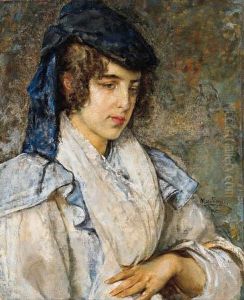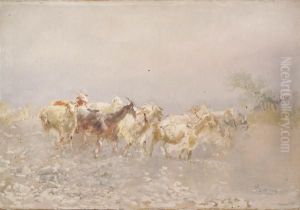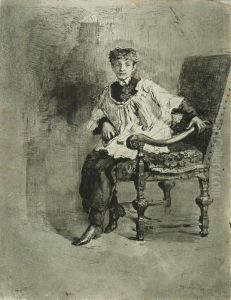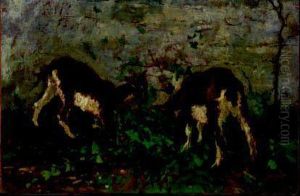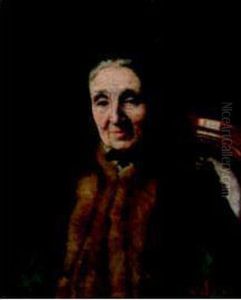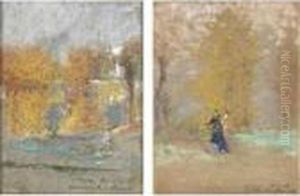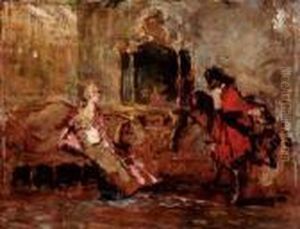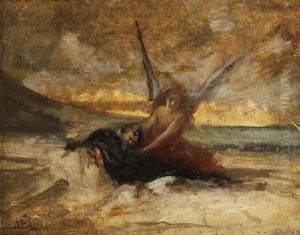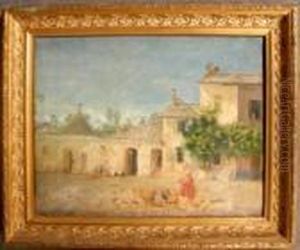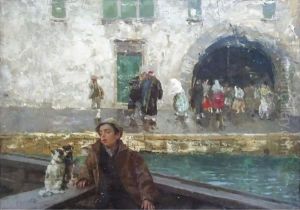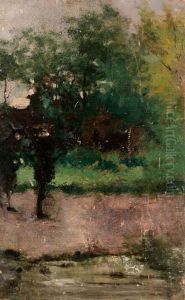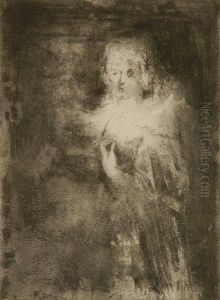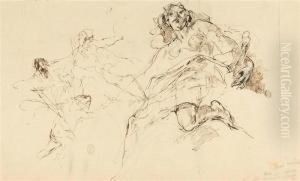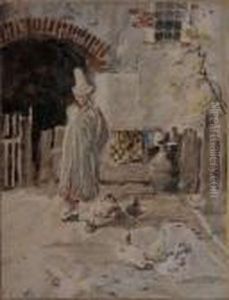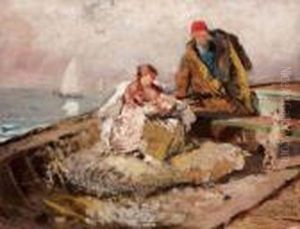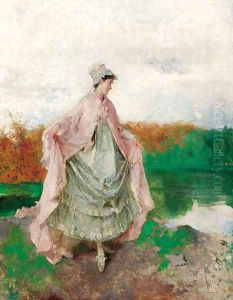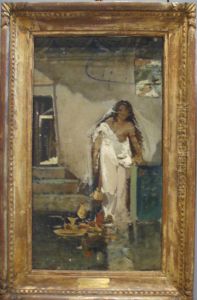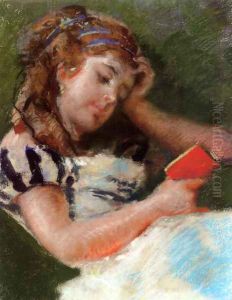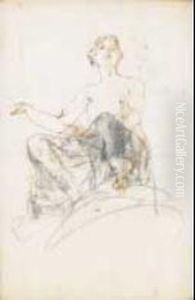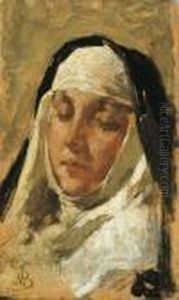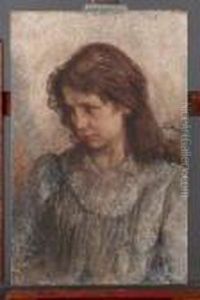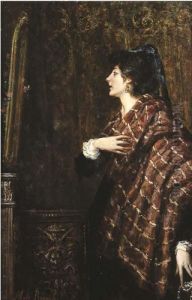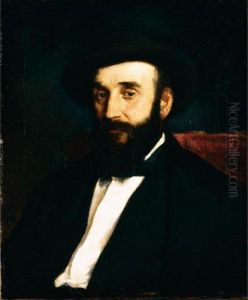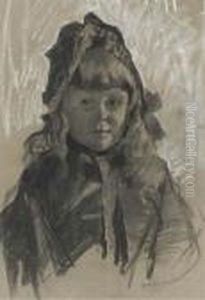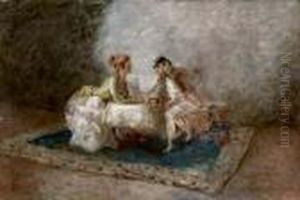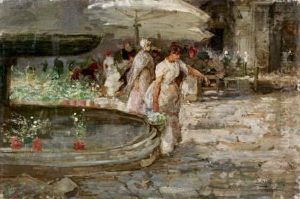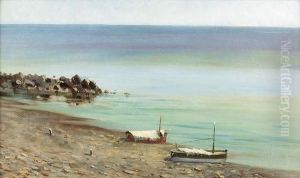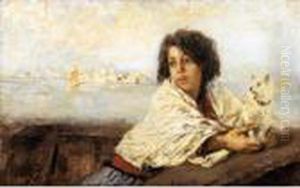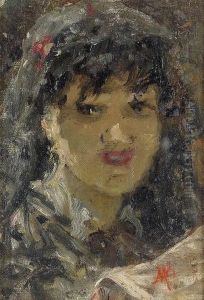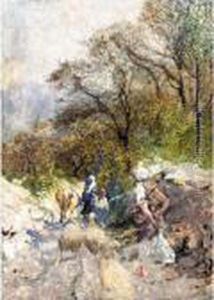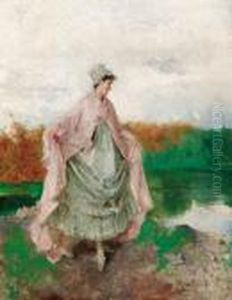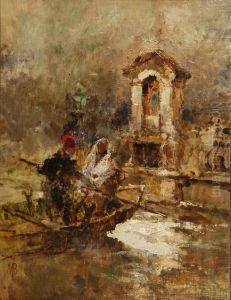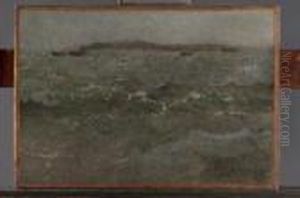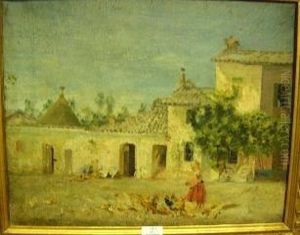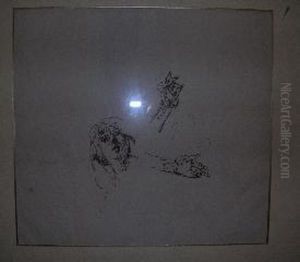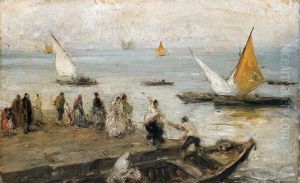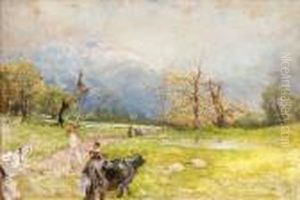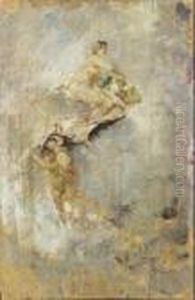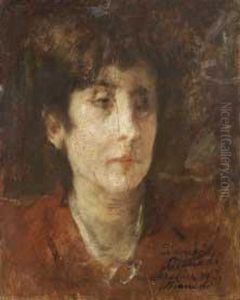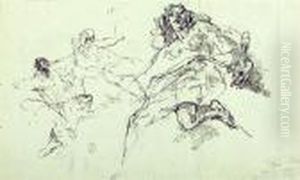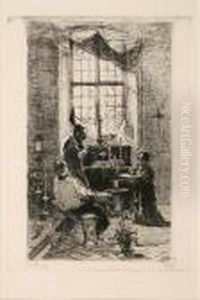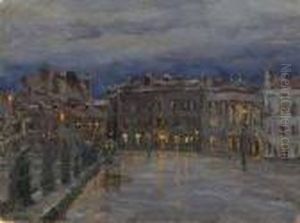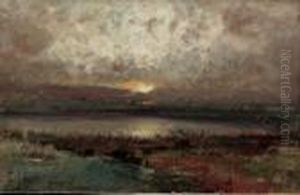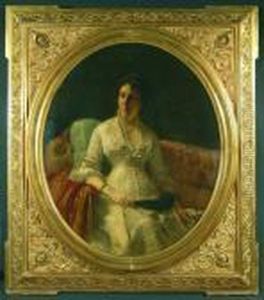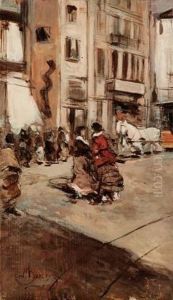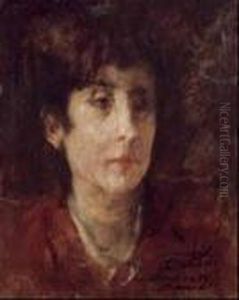Mose Bianchi Paintings
Mose Bianchi, born on October 31, 1840, in Monza, Italy, was an influential Italian painter and printmaker associated with the Scapigliatura movement, which sought to shake the Italian art world from its traditional moorings during the late 19th century. Bianchi's early life was steeped in an environment of creativity and artistry, which played a significant role in shaping his artistic direction. His father, Pietro Bianchi, was a decorator and painter, providing the young Mose with an early exposure to the world of art. This familial background, combined with his innate talent, set the stage for what would become a prolific and impactful career in the arts.
After initial training under his father, Bianchi pursued formal art education at the Brera Academy in Milan, where he was influenced by the Romantic and Realist movements that were dominant at the time. His early works were characterized by a keen observation of light and shadow, a skill that would become a hallmark of his mature style. Bianchi's artistic journey was marked by a continuous exploration of various subjects, including landscapes, portraits, and religious themes, showcasing his versatility and depth as an artist.
Bianchi's involvement with the Scapigliatura movement, which emerged in Milan during the 1860s, was a defining period in his career. The movement, characterized by its rebellious spirit and opposition to the academic conventions of the time, resonated with Bianchi's own artistic sensibilities. His association with key figures of the Scapigliatura, such as Tranquillo Cremona and Daniele Ranzoni, further enriched his artistic vision, leading him to experiment with light and color in innovative ways. Bianchi's work from this period reflects a remarkable ability to capture the ephemeral qualities of light, imbuing his scenes with a sense of immediacy and emotional depth.
Throughout his career, Bianchi enjoyed considerable success and recognition, both in Italy and abroad. His works were exhibited in major Italian cities as well as in international exhibitions, including the Exposition Universelle in Paris. Despite his affiliation with the avant-garde Scapigliatura movement, Bianchi's art maintained a balance between innovation and accessibility, allowing him to reach a wide audience. His contributions to Italian art were not limited to his own creations; Bianchi also played a significant role as a teacher, imparting his knowledge and passion to the next generation of artists.
Mose Bianchi's legacy is that of a pioneering artist who bridged the gap between tradition and modernity. His mastery of light and color, combined with a deep sensitivity to the human condition, has left an indelible mark on the history of Italian art. Bianchi passed away on March 14, 1904, in Monza, leaving behind a body of work that continues to inspire and captivate audiences. His life and art remain a testament to the enduring power of creativity and innovation in the pursuit of artistic expression.
